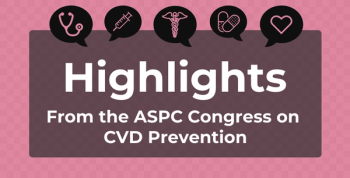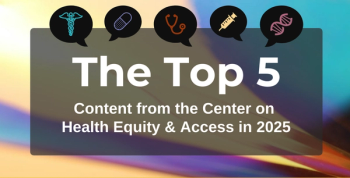
Chatbot Increased HIV Self-Testing in MSM
Key Takeaways
- An HIV self-testing (HIVST) chatbot and HIVST online real-time support by humans (HIVST-OIC) showed similar effectiveness in increasing HIV self-testing uptake among men who have sex with other men.
- The HIVST-chatbot group had a lower cost per user and higher counseling support compared to the HIVST-OIC group.
The HIV chatbot was noninferior in increasing self-testing compared with the real-time support by human administrators.
Equal success was found in increasing
MSM who are sexually active should receive testing for HIV
This study was conducted in Hong Kong between April 16, 2023, and May 31, 2024. The participants were all men who were aged 18 years or older, had access to WhatsApp, and had anal intercourse with a man in the past 6 months. Participants were recruited through online recruitment, peer referral, and advertisements in gay venues.
Participants were randomly assigned 1:1 to either the chatbot group or the HIVST-OIC group. Participants in the HIVST-OIC group watched a video that promoted HIV testing before being told the benefits of HIVST-OIC. Participants could sign up for the real-time support, find ways to receive a free HIVST kit, and communicate their preference of HIVST. The HIVST-chatbot group also watched the same video but instead were told the advantages of HIVST chatbots after the video. Participants were aided in connecting to the chatbot.
There were 531 MSM who were assigned to the 2 groups who had a mean (SD) age of 34.8 (9.3) years. The HIVST-chatbot was noninferior to HIVST-OIC when it came to increasing uptake (81.2% vs 85.7%). The proportion of participants who received counselling after using HIVST was also noninferior (91.2% vs 62.6%). The HIVST-chatbot group had more HIVST users who received counselling support compared with the HIVST-OIC group (33.8 vs 6.6%). Condomless anal intercourse was not significantly different between the 2 groups. There were also no significant differences in the uptake of any or specific types of testing.
There were 2 participants in the HIVST-chatbot group and 3 in the HIVST-OIC group who received a positive result after HIV testing. The chatbot group had a lower total cost compared with the HIVST-OIC group ($27,258.80 vs $30,885.20), which came to a lower cost per HIVST user in the chatbot group ($139.80 vs $156.80).
There were some limitations to the study. All participants needed to have a smartphone and WhatsApp. Neither the HIVST chatbot nor the HIVST-OIC was tested against the lack of an intervention. Selection bias is possible due to convenience sampling. User preference and other findings were not evaluated in the study. Social desirability may have led to overreporting of HIV testing or underreporting of risk behavior. Data from those who refused to participate were not collected.
“The HIVST-chatbot was noninferior to the evidence-based HIVST-OIC in increasing HIVST uptake and the proportion of HIVST users receiving counseling,” the researchers concluded. “With some adaptations, the HIVST-chatbot service can potentially be used in other key populations.”
References
1. Chen S, Yu F, Fang Y, et al. Chatbot-delivered real-time support to improve HIV self-testing rates: a randomized clinical trial. JAMA Netw Open. 2025;8(11):e2544821. doi:10.1001/jamanetworkopen.2025.44821
2. DiNenno EA, Prejean J, Irwin, et al. Recommendations for HIV screening of gay, bisexual, and other men who have sex with men — United States, 2017. MMWR Morb Mortal Wkly Rep. 2017;66(31):830-832. doi:10.15585/mmwr.mm6631a3
Newsletter
Stay ahead of policy, cost, and value—subscribe to AJMC for expert insights at the intersection of clinical care and health economics.








































